9 Famous Thai Celebrities’ Cafes and Eateries in Thailand
A look at a list of Thai celebrities who own restaurants and ...
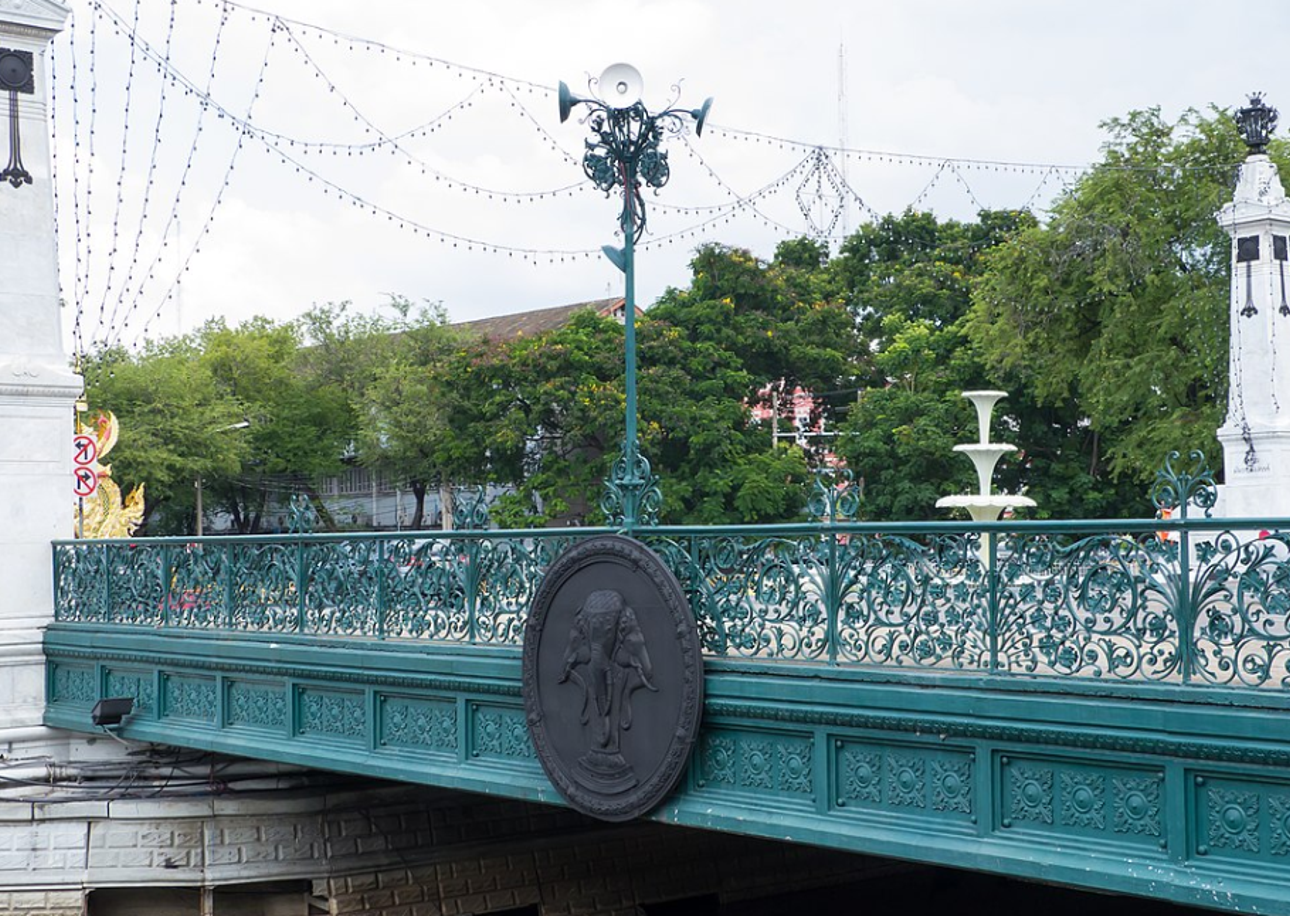
Bangkok, boasts ancient structures that have withstood the test of time. In this exploration, we look into the world of Bangkok’s historic bridges, each with its own unique story to tell. Whether it’s the grand river-crossings or the humble canal-crossing, this is a journey through time to learn about the legacy and significance of these structures that have played a crucial role in shaping Bangkok’s history.
This bridge has featured in popular Thai films like “Sunset at Chaophraya” and “Homestay” and is also a wonderful spot for seeing the fireworks during festival periods. In English, it’s known as the Memorial Bridge, but in Thai, it’s called Phra Phutthayotfa Bridge or simply Saphan Phut.
The Memorial Bridge, a 91-year-old bascule structure, gracefully spans the Chao Phraya River, connecting Phra Nakhon and Thonburi in Bangkok. It’s famed for its distinctive green hue. King Prajadhipok (Rama VII) inaugurated it on April 6, 1932, commemorating the 150th anniversary of the Chakri dynasty and the founding of Bangkok, just before the Siamese coup d’état on June 24, 1932. Dorman Long of Middlesbrough, England, oversaw its construction with Italian technicians from SNOS (Società Nazionale Officine Savignano). The bridge once had a double-leaf bascule lifting mechanism, now inactive. During World War II, the bridge was targeted by B-29 Super-fortresses. It was restored by the Allies in 1949.
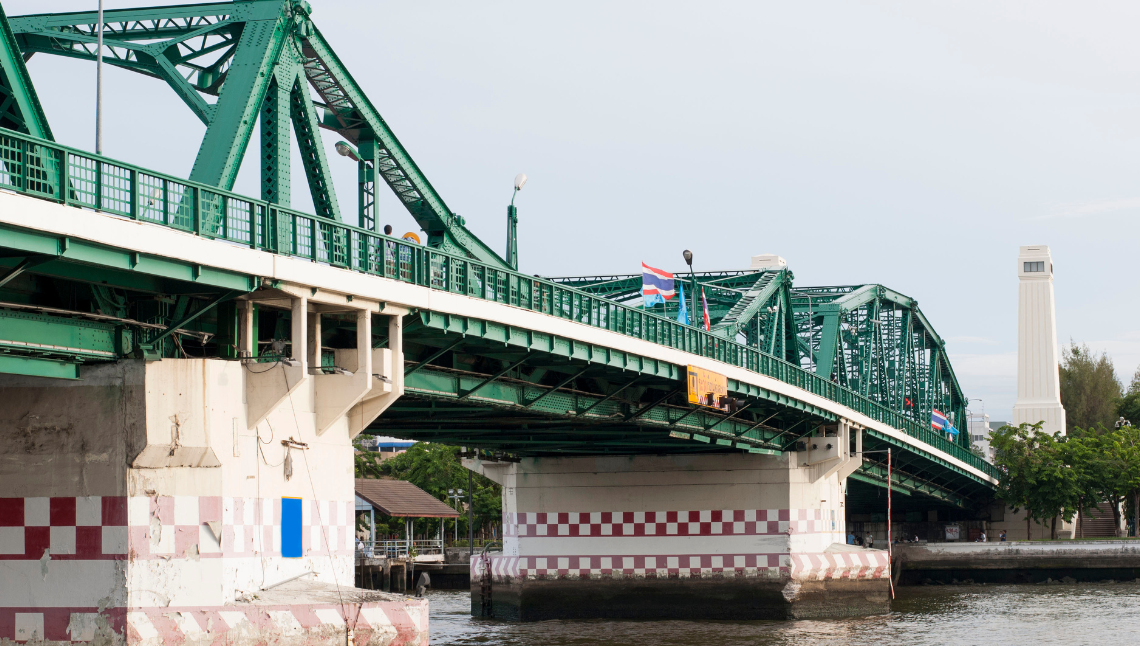
With a remarkable 96-year history and its unique architectural beauty, the Rama VI Bridge is a favourite spot for photographers and sunset enthusiasts.
This railway bridge spans the Chao Phraya River, connecting Bang Sue and Bang Phlat districts in Bangkok, Thailand. It was the first to cross the Chao Phraya River, serving as a single-track railway and a two-lane road. Construction began in December 1922 under King Vajiravudh’s reign, named after him and officially opened on January 1, 1927. During World War II, a significant portion of the centre was damaged, and it was restored from 1950 to 1953. In 1992, the nearby Rama VII Bridge diverted car traffic, making it railway-only. It is the longest railway bridge in Thailand, surpassing the River Kwai Bridge in Kanchanaburi by almost 110 metres.
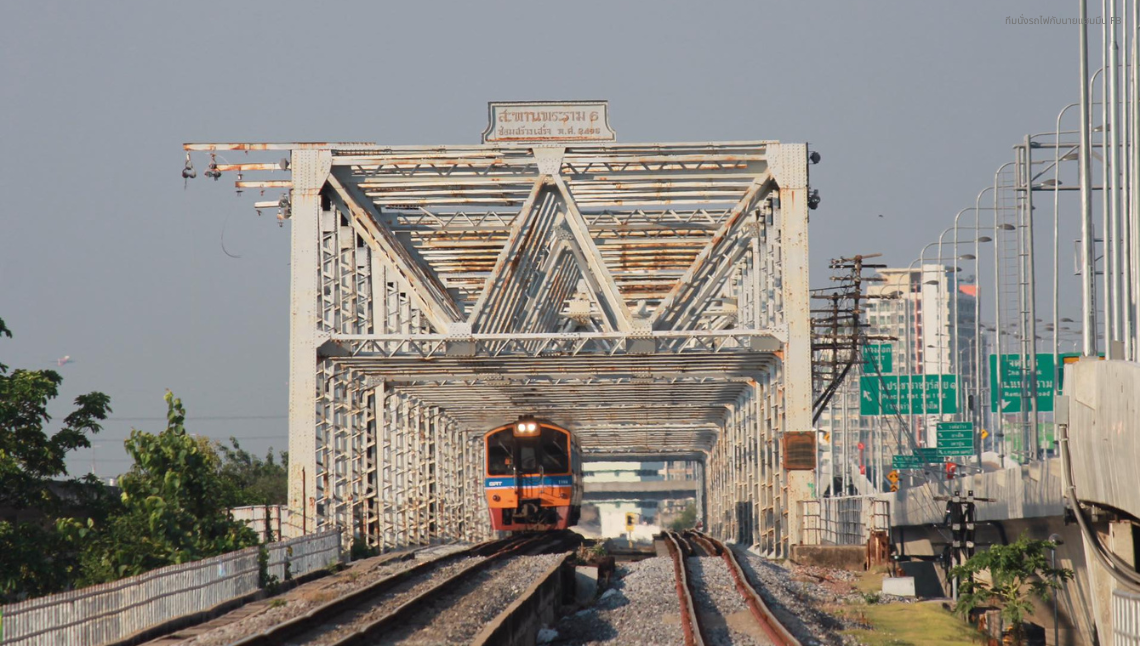
Photo: Courtesy of ทีมนั่งรถไฟกับนายแฮมมึน FB
The area surrounding Saphan Wan Chat is renowned for its display of national flags and its stores, hostels, restaurants, and cafes catering to tourists.
Saphan Wan Chat, also known as Chaloem Wat Chat, is an 83-years-old bridge and four-way intersection situated in various sub-districts in Bangkok. Constructed in 1940 during Field Marshal Plaek Phibunsongkhram’s government, it spans Khlong Rop Krung, marking the starting point of Prachathipatai road and the tip of Dinso road. Initially built to commemorate Thailand’s national day on December 10.
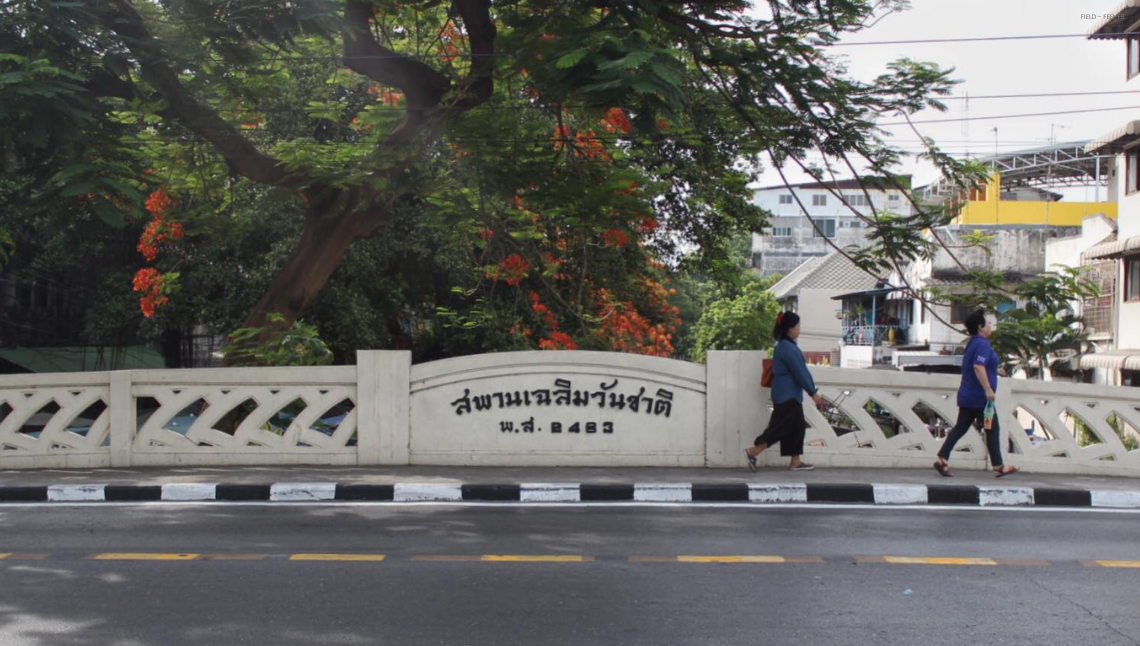
Photo: Courtesy of Field – feel FB
Situated near significant landmarks like the United Nations offices in Thailand, Rajadamnern Boxing Stadium, and the Government House. During the political unrest from 2010 to 2014, it served as a venue for various political demonstrations.
Makkhawan Rangsan Bridge is an impressive structure located in the heart of Bangkok, spanning Khlong Phadung Krung Kasem. Designed by Italian architect Carlo Allegri, it draws inspiration from the Pont Alexandre III in Paris. Adorned with an Erawan (Airavata) steel frame and four marble lamp posts, it is one of the most exquisite bridges in Bangkok. King Chulalongkorn (Rama V) inaugurated it on November 1, 1903.
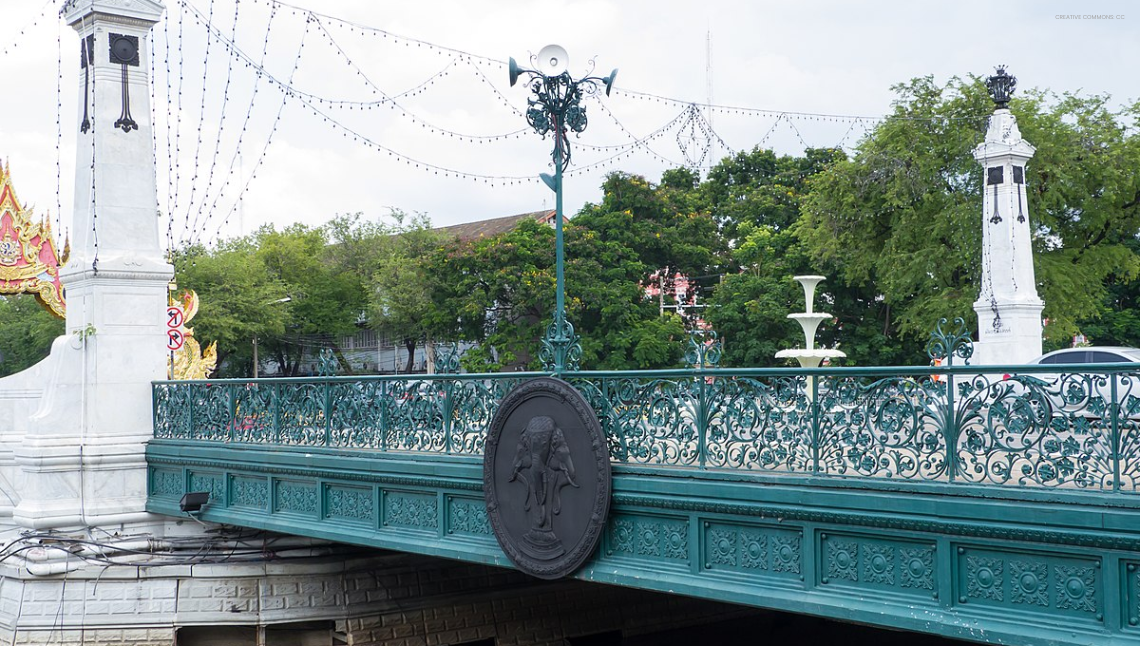
Photo: Courtesy of Creative Commons: CC
Historically a gathering point for significant political events in Thai history, including the October 14 incident in 1973, Black May in 1992, protests in 2006, 2008, 2009, 2010, and 2013 to 2014.
Phan Fa Lilat Bridge, with a history of 124 years, crosses Khlong Bang Lamphu on Ratchadamnoen Avenue, marking the border of sub-districts in Phra Nakhon District. Positioned between Democracy Monument and Royal Plaza, it’s a historic symbol of Thai democracy.
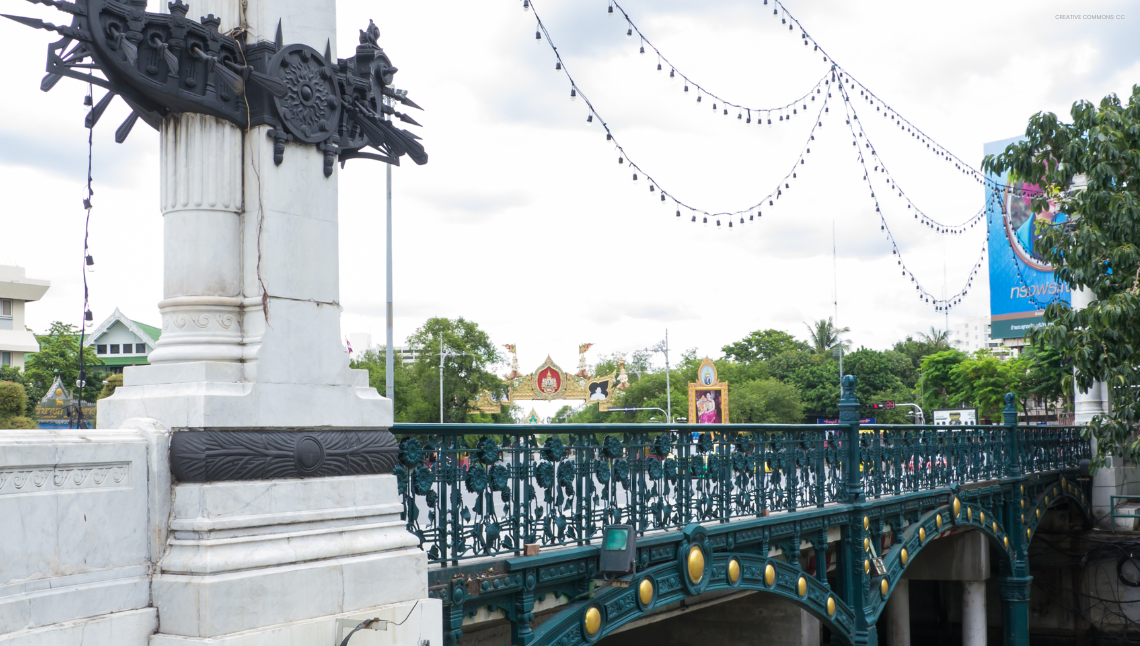
Photo: Courtesy of Creative Commons: CC
These iconic bridges are witnesses to the city’s transformation, linking the past to the present and echoing with the voices of those who have walked their paths. As we cross their storied spans, we honour their beauty and the spirit that has carried Bangkok through the ages. These bridges are the heartbeats of a city.
A look at a list of Thai celebrities who own restaurants and ...
These top 5 barber shops in Bangkok are where gentlemen can elevate ...
A detailed guide to hiking the Naga Cave, combining physical challenges with ...
Saturdays are already made for Salmon, now there's even more reason to ...
While traditional TV shows are serving us endless boy-meets-girl tales. Thailand has ...
Sailorr and Molly Santana’s black grills fuse hip-hop swagger with homage to ...
Wee use cookies to deliver your best experience on our website. By using our website, you consent to our cookies in accordance with our cookies policy and privacy policy